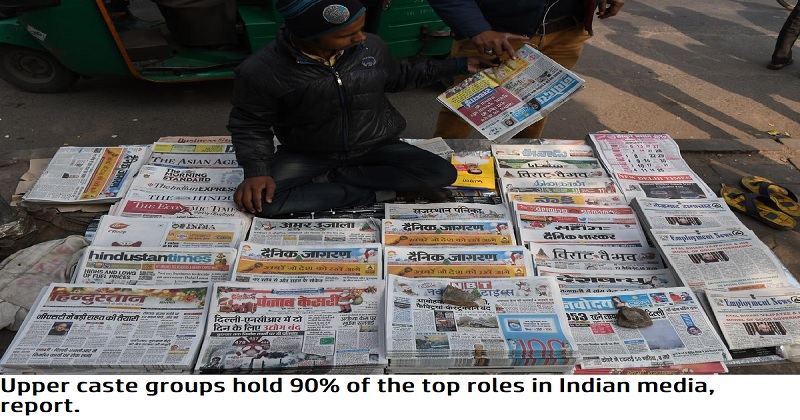
According to a recent research, higher caste groups hold almost 90% of the leadership roles in Indian media, with nary a single Dalit or Adivasi in charge of the country’s mainstream media.
The second edition of Oxfam India-report states that, Newslaundry’s ‘Who tells our stories matters: Representation of Marginalized Caste Groups in Indian Media,’ general caste groups hold 90% of the leadership positions in print, TV, and digital media, while neither scheduled castes (SC) nor scheduled tribes (ST) are in charge of mainstream media outlets.
The data made public at The Media Rumble, South Asia’s largest news media platform, also reveals that marginalised castes (SC, ST, or OBC) only contribute to about one out of every five pieces whereas general caste authors write three out of every five articles in Hindi and English publications.
Editor-in-chief, managing editor, executive editor, bureau chief, and input/output editor are among the 121 newsroom leadership positions that are filled by upper castes 106 times, other backward classes five times, and members of minority communities six times out of the newspapers, TV news channels, news websites, and magazines under study. Four cases could not be linked to specific people.
Out of a total of 40 anchors for Hindi stations and 47 for English channels, three out of every four discussion anchors are upper caste. None of them were Dalits, Adivasis, or members of the OBC. ‘The majority of the panellists for news stations’ primetime discussion programs—more than 70% of them—come from the upper castes. Only 5% of all articles in English-language newspapers are written by Adivasis and Dalits. Hindi newspapers perform marginally better, at roughly 10%, ‘It read.
The study looked at the coverage, socioeconomic background of the leadership, and caste makeup of the journalists working for the organisations at 43 Indian print, TV, and digital media sources.
Between April 2021 and March 2022, more than 20,000 magazine and newspaper pieces, 2,075 prime-time debates with 76 moderators and 3,318 participants, and 12 months’ worth of online news items were analysed for the study.
The study focused on qualitative factors such the authors’ and participants’ social backgrounds, the news item’s importance, and the subject of the coverage.
With the aid of surveys, secondary sources of information, and databases from the UPSC and federal universities, the paper also looked into the representation of different caste groups among news organisations’ staff members.

Post Your Comments